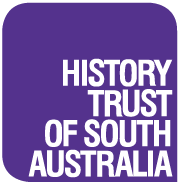Housed in 1866 Baptist church, which was a technical school from 1948 till the 1960s, the Kapunda Historical Society’s museum depicts the social and commercial history of Kapunda, the oldest copper mining town in Australia.
The museum has two floors depicting the social and commercial history of Kapunda. There is also an extensive display of agricultural machinery, with a motor pavilion displaying, amongst other motoring memorabilia, Kapunda’s old fire engine, ambulance and hearse.
As well as a collection of agricultural equipment and other machinery, the museum has one of the finest collections of old record players (including wax cylinders and 78 rpm machines) in Australia and also a particularly interesting collection of early motorcycles and other motoring memorabilia including Kapunda’s old fire engine and ambulance.
On the upper floor the Hawke Gallery commemorates the engineering firm founded in 1857 by Henry Binney Hawke. Here a massive Hawke cross-compound steam engine holds pride of place along with other products of the company’s over 160 year history.
Downstairs one can see the ship’s bell from the HMAS Kapunda and discover the story of the Kapunda at sea. There is also the printing press that printed the first edition of the Kapunda Herald in 1864 along with the later printing equipment; Kapunda’s early X ray machine and the operating table from the local hospital; and also various early Armstrong washing machines and other domestic equipment.
Copper was discovered at Kapunda in 1842 and the town is considered the birthplace of Australia’s commercial mining industry. After the closing of the mine in 1877, the town became the centre for a thriving pastoral industry. It was the home of Cattle King Sir Sidney Kidman, the world’s largest private landowner who made the town famous again worldwide with his yearly horse sales.
In a separate building a few doors down from the museum in the former Kapunda Herald Printing Office is Bagot’s Fortune, a professionally designed interpretive display depicting the lifestyle of the pioneer men and women who lived and worked on Australia’s first commercially viable metal mine. Under the management of the principal owner Captain Charles Hervey Bagot, the Kapunda Mine was developed from the wilderness to produce the richest and purest copper ore the world has ever seen. The display covers all the aspects of the early mining and the pioneer lifestyle of the miners. Take a glimpse through the door into Rosie’s Cottage at the Irish settlement on Baker’s Flat. See how the first settlers lived in colonial South Australia with barely the basic necessities. Watch the working 38% scale model of the Cornish Buhl Pumping Engine that was installed on the mine in 1852. Look down the mine shaft to see our Cornish Miner, Robert Nicholls filling the kibble ready to be loaded into the ore truck by Paddy the Irish labourer, then take to the Welsh smelter operations for refining.

